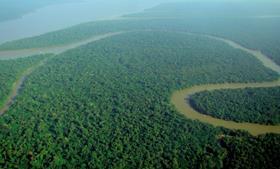
As Colombian avocados continue to conquer new markets across the globe, the country is looking to capitalise on its growing reputation for quality and reliability by introducing more specialised products to its export basket.
In June 2018, the Colombian Agricultural Institute (ICA) set up a working group with indigenous rainforest communities and other state bodies to develop exports of a number of little-known Amazonian fruits for the European market.
“The main products being studied are Copoazú, Arazá and Amazonian Lulo,” explained Alvaro Palacio, manager of Colombia’s national fruit association, Asohofrucol. “Each product was chosen because of its quality as well as its nutritional and cosmetic properties, which give them the greatest export potential.”
Copoazú, or cacao blanco, is a brown, elongated fruit weigh on average about 1.5kg. It contains several seeds and a whitish, slightly acidic flesh with a distinctive flavour. Both seeds and the flesh are can be consumed: the flesh is eaten fresh or used to make drinks, jams, desserts and ice creams, while the seeds are used to make cupulate, a product with similar nutritional and organoleptic features as cocoa.
Arazá, meanwhile, is a small fruit with yellow or green skin and a pulpy flesh which is usually consumed in drinks and jams rather than fresh due to its sour taste. It has many health benefits, including twice the level of vitamin C as oranges.
Amazonian Lulo is a conical fruit with an intense yellow or orange skin and soft yellowish pulp with a smooth aromatic taste.
The working group’s main activity is to educate the indigenous communities on everything related to Good Agricultural Practices and phytosanitary regulations, from sowing right through to harvesting, to ensure that it meets the requirements of the export market. Farmers are encouraged to register their production and notify the authorities when there is an outbreak of pests or disease so that it can be dealt with in the most appropriate way.
Due to their nature, production areas are still small, but growing steadily. According to government figures, plantings of Copoazú totally 93ha in 2018, an increase of 23 per cent on the previous year, while Arazá production rose 37 per cent from 36ha to 57ha. In 2018, production of Copoazú and Arazá reached 295 tonnes and 318 tonnes respectively.
“We’re talking about an average weekly output of 5.5 tonnes,” said Palacio, who explains that the aim is to gradually improve the quality of the fruit and ensure it meets the proper criteria to be exported to the European market.
Palacio acknowledged that there is still some way to go to convert these fruits into cash crops that will generate a sustainable income for the inhabitants of the Amazon and help protect the rainforest itself.
“The viability of this project depends on a number of factors, such as proper crop scheduling to guarantee a continuous supply; putting the logistics in place so that the products can be transported to packing plants; ensuring that growers certify their production and renew those certifications when required to do so; and making sure that pesticides and fertilizers do not exceed the MRLs set out by the European Union,” Palacio said.
“Fortunately, the huge increase in Colombian fruit exports we’ve seen in recent years means growers have come a long way in terms of the responsible use of chemical inputs, and are far more sensitive to GlobalGAP and other certification schemes,” he added.
“Products such as avocado, Persian lime, physalis and passion fruit have boosted Colombia’s reputation as reliable and high quality supplier, and this will allow us to continue to expand our export offer.”



